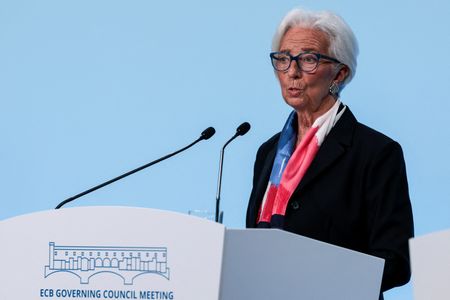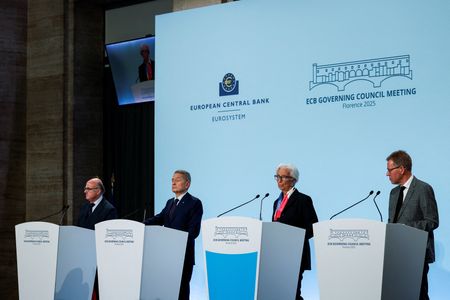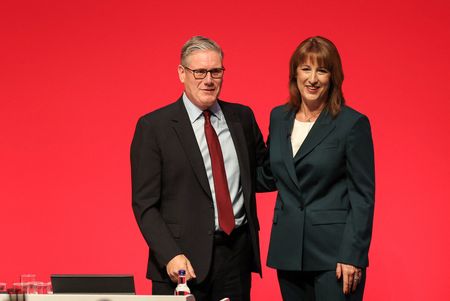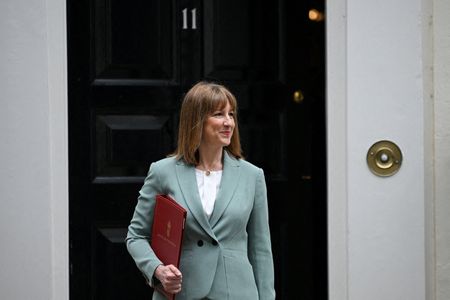By Francesco Canepa and Balazs Koranyi
FLORENCE, Italy (Reuters) -The European Central Bank kept interest rates unchanged at 2% for the third meeting in a row on Thursday and repeated that policy was in a “good place” as economic risks recede and the euro zone shows continued resilience in the face of uncertainty.
The ECB cut rates by a combined 2 percentage points in the year to June but has since kept to the sidelines, and a sanguine assessment from its President Christine Lagarde on Thursday suggested it was in no hurry to change policy.
She argued that Europe’s trade deal with the United States, the Gaza ceasefire and Thursday’s agreement between U.S. President Donald Trump and China’s Xi Jinping to trim tariffs had all mitigated downside risks to growth.
“From a monetary policy point of view, we are in a good place,” Lagarde told a press conference. “Is it a fixed good place? No. But we will do whatever is needed to make sure that we stay in a good place.”
While growth across the 20 countries that use the euro is not spectacular, Lagarde said she would not complain about the currency bloc’s 0.2% expansion rate in the third quarter, which beat both market and ECB projections.
But while growth risks have abated, she said the same could not be said for inflation, which the ECB expects to undershoot the target next year.
“I think on that front, it’s a more balanced picture,” Lagarde said.
Financial investors did not materially alter their view on the policy outlook and still see a 40% to 50% chance of one last rate cut by the middle of next year.
DATA SIGNALS MIXED ON THE ECONOMY
“We do not expect rate changes from the ECB for a long time, though there are still many risks to this view,” Nordea economist Jan von Gerich said. “Also today’s message further illustrated that the ECB is nowhere near any rate changes.”
Changes to the European Union’s ETS2 emissions trading system could nuance the picture, however.
ETS2 was expected to add 0.3 percentage points to 2027 inflation but the EU was considering smoothing the introduction over two years, Lagarde said.
This could potentially reduce the inflationary impact, which may drag price growth below the ECB’s 2% target in 2027 – a potential argument to cut rates.
While some policymakers have repeatedly warned about downside risks, most have taken a balanced view and key data have surprised on the upside in recent weeks.
Thursday’s GDP figures beat the ECB’s prediction of stagnation, with Spain and France both outperforming in July-September. Some early fourth-quarter figures suggest growth could pick up.
A Purchasing Managers’ Index survey last week suggested accelerating business activity while sentiment in Germany, the biggest euro zone economy, is improving and businesses across the bloc are becoming more optimistic.
But these relatively upbeat reports are balanced out by data showing industry continues to suffer and that exports to the United States are down sharply. There are also signs China is dumping goods it cannot sell in the U.S. on European markets.
The question then is whether the outlook can remain in such a fine balance. Undershooting risk would strengthen the case for a “slightly lower” policy rate, ECB Chief Economist Philip Lane has argued – a message that is consistent with market pricing.
The majority of economists nevertheless see rates remaining where they are, on the premise that uncertainty will fade while households have plenty of savings and the German government is sharply raising spending.
“Overall, the scenario of an unchanged deposit rate of 2.0% remains the most likely scenario, as the hurdle for rate hikes is usually very high for the ECB,” Commerzbank economist Jörg Krämer said.
(Additional reporting by Valentina Za; Editing by Catherine Evans)











